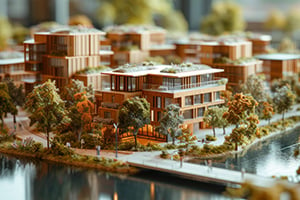By Ariana Nieves,
Marketing Coordinator
Sustainable Investment Group (SIG)
What Energy Rates and Structures Are
Energy rates are the prices a consumer pays for each unit of electricity to their electric utility provider. An energy rate structure is the blend of rates, supplementary charges, and other regulations that establish how the electricity bill is estimated.
Rate structures can be divided into three categories: customer charges, demand charges, and supply charges. Customer charges include anything linked to making the service available (installation and maintenance). Demand charges relate to meeting peak demand, so any operating costs are included here. Lastly, supply charges deal with costs to produce energy and fuel. This charge varies with consumption.
Why They Are Important
Energy rate structures are a great way to encourage decarbonization. By restructuring rate systems, companies can push for beneficial electrification and encourage consumers to utilize more clean electric resources. This could become a key way to meet decarbonization goals.
Energy Restructuring in Action
In 2019, California began the process of restructuring its energy rates to build decarbonization efforts. In the past, the state’s structure focused on promoting conservation, solar rooftop installations, and energy efficiency. It accomplished this through a tiered system, a higher rate of consumption led to increased rates.
This system worked to lower electricity consumption. However, with the growth of renewable electric markets, building electrification, and fuel substitution this structure made it more expensive to utilize these new climate-friendly options. To combat this, California began considering ways to restructure this system.
The California Public Utilities Commission discovered that time was just as important as quantity usage for electricity. They used this concept to construct a new structure based on default time-of-use. It will be set up to have a peak to off-peak variance and contain a baseline that reduces the rates up to the baseline amount. There are many other elements included in this rate design plan, check out https://gridworks.org/2019/10/rate-design-and-building-decarbonization-options-and-tradeoffs/ for a full in-depth analysis.
Additionally, California curated demand response programs that promote monetary incentives to consumers that agree to reduce their loads at key times. These practices being put into place is a step in the right direction towards a decarbonized future.
Overall, energy rate structures can help promote beneficial electrification which lowers emissions and reduces electric utility costs from the increased load. Over time, this can improve decarbonization efforts and encourage residents to utilize renewable electricity to run their homes and vehicles.
Sources:
https://gridworks.org/2019/10/rate-design-and-building-decarbonization-options-and-tradeoffs/
© 2022 Sustainable Investment Group (SIG). All rights reserved.



